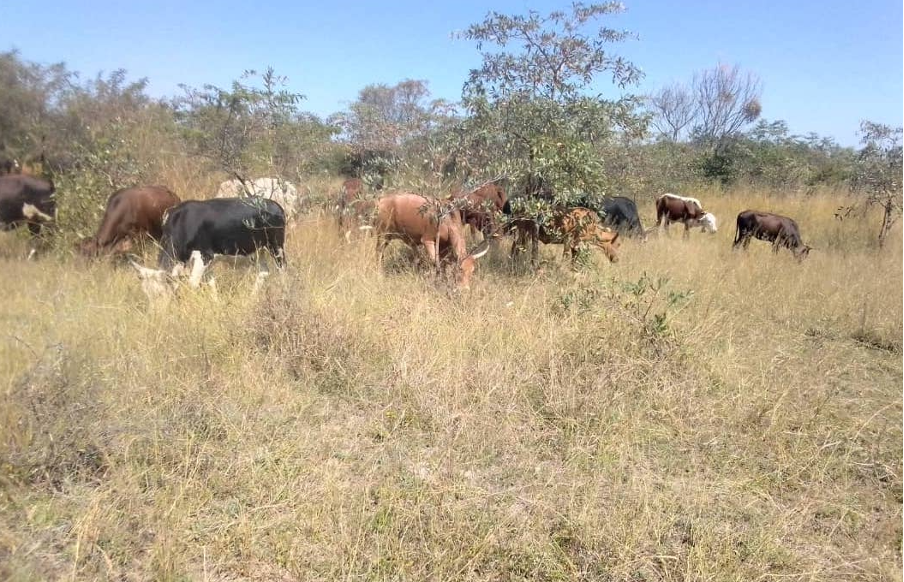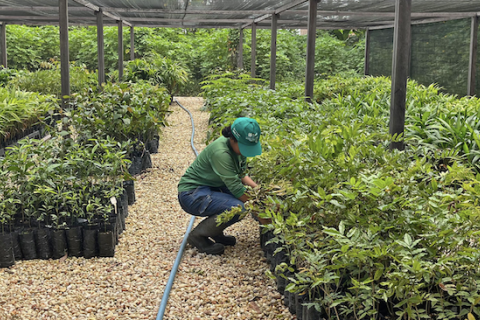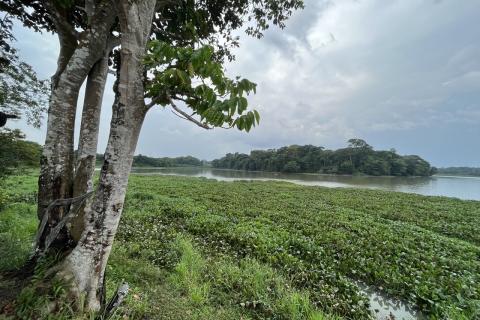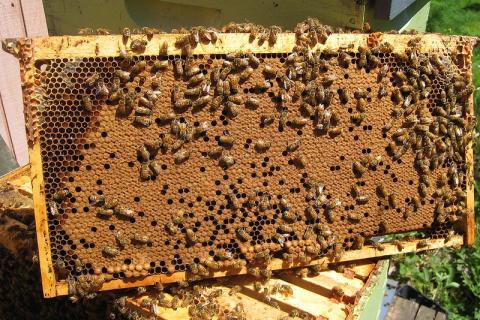

Related content:
Reporting on Environment and Land: The Solutions Journalism Approach
Home
 |
 |
Land Portal and Solutions Journalism Network LEDE Fellow Nieves Zúñiga are collaborating on a project to spread solutions-based stories about repairing the environment, while also improving land governance.
About the collaboration
The Land Portal is a leading global platform for inclusive knowledge sharing on land governance. We believe that access to information is crucial for achieving good land governance and securing land rights for landless and vulnerable people. Our mission is to nurture a growing information ecosystem on land governance to inform and improve decision-making, policy and practice at all levels.
Solutions Journalism Network’s mission is to transform journalism so that all people have access to news that helps them envision and build a more equitable and sustainable world. The LEDE Fellowship, awarded by Solutions Journalism Network, allows journalists entrepreneurs to create and lead projects to spread solutions journalism.
The Land Portal and LEDE Fellow Nieves Zúñiga will sponsor six solution stories about land and the environment to be produced and published in 2022. Our collaboration is to faciliate training, dialogue, story production and dissemination on solutions repairing environmental damage and improving land governance. The stories will be first published in local outlets and ultimately published for a global audience on the Land Portal.
Alarming news about the devastation of global warming or the destructive consequences of our economic activities or consumption are in the media daily. But, the reality is that human action is also the solution even if this part of the story hardly makes it to the media. We choose to highlight these solutions.
Please stay tuned to this space for future updates.
Join us for the introductory briefing on March 9.
Pitch us your solution story here.
 |
As part of this project, the Land Portal and LEDE Fellow Nieves Zúñiga will sponsor six solution stories to be produced and published in 2022. |
SPECIAL REPORT: Soilless Farming to the Rescue. How to Boost Agriculture Without Hurting Forests
From Japan to Brazil: Reforesting the Amazon with the Miyawaki method
Journalism project highlights solutions to land and environmental challenges
Reporting on Environment and Land: The Solutions Journalism Approach
Home
 |
 |
Land Portal and Solutions Journalism Network LEDE Fellow Nieves Zúñiga are collaborating on a project to spread solutions-based stories about repairing the environment, while also improving land governance.
About the collaboration
The Land Portal is a leading global platform for inclusive knowledge sharing on land governance. We believe that access to information is crucial for achieving good land governance and securing land rights for landless and vulnerable people. Our mission is to nurture a growing information ecosystem on land governance to inform and improve decision-making, policy and practice at all levels.
Solutions Journalism Network’s mission is to transform journalism so that all people have access to news that helps them envision and build a more equitable and sustainable world. The LEDE Fellowship, awarded by Solutions Journalism Network, allows journalists entrepreneurs to create and lead projects to spread solutions journalism.
The Land Portal and LEDE Fellow Nieves Zúñiga will sponsor six solution stories about land and the environment to be produced and published in 2022. Our collaboration is to faciliate training, dialogue, story production and dissemination on solutions repairing environmental damage and improving land governance. The stories will be first published in local outlets and ultimately published for a global audience on the Land Portal.
Alarming news about the devastation of global warming or the destructive consequences of our economic activities or consumption are in the media daily. But, the reality is that human action is also the solution even if this part of the story hardly makes it to the media. We choose to highlight these solutions.
Please stay tuned to this space for future updates.
Join us for the introductory briefing on March 9.
Pitch us your solution story here.
 |
As part of this project, the Land Portal and LEDE Fellow Nieves Zúñiga will sponsor six solution stories to be produced and published in 2022. |
Beekeeping revives forests, land in Zimbabwe
Journalism project highlights solutions to land and environmental challenges
Reporting on Environment and Land: The Solutions Journalism Approach
Home
 |
 |
Land Portal and Solutions Journalism Network LEDE Fellow Nieves Zúñiga are collaborating on a project to spread solutions-based stories about repairing the environment, while also improving land governance.
About the collaboration
The Land Portal is a leading global platform for inclusive knowledge sharing on land governance. We believe that access to information is crucial for achieving good land governance and securing land rights for landless and vulnerable people. Our mission is to nurture a growing information ecosystem on land governance to inform and improve decision-making, policy and practice at all levels.
Solutions Journalism Network’s mission is to transform journalism so that all people have access to news that helps them envision and build a more equitable and sustainable world. The LEDE Fellowship, awarded by Solutions Journalism Network, allows journalists entrepreneurs to create and lead projects to spread solutions journalism.
The Land Portal and LEDE Fellow Nieves Zúñiga will sponsor six solution stories about land and the environment to be produced and published in 2022. Our collaboration is to faciliate training, dialogue, story production and dissemination on solutions repairing environmental damage and improving land governance. The stories will be first published in local outlets and ultimately published for a global audience on the Land Portal.
Alarming news about the devastation of global warming or the destructive consequences of our economic activities or consumption are in the media daily. But, the reality is that human action is also the solution even if this part of the story hardly makes it to the media. We choose to highlight these solutions.
Please stay tuned to this space for future updates.
Join us for the introductory briefing on March 9.
Pitch us your solution story here.
 |
As part of this project, the Land Portal and LEDE Fellow Nieves Zúñiga will sponsor six solution stories to be produced and published in 2022. |
Rice farmers cushion losses with resilient farmer-bred variety
Journalism project highlights solutions to land and environmental challenges
Journalism project highlights solutions to land and environmental challenges
Copyright © Fuente (mencionado anteriormente). Todos los derechos reservados. El Land Portal distribuye materiales sin el permiso del propietario de los derechos de autor basado en la doctrina del "uso justo" de los derechos de autor, lo que significa que publicamos artículos de noticias con fines informativos y no comerciales. Si usted es el propietario del artículo o informe y desea que se elimine, contáctenos a hello@landportal.info y eliminaremos la publicación de inmediato.
Varias noticias relacionadas con la gobernanza de la tierra se publican en el Land Portal cada día por los usuarios del Land Portal, de diversas fuentes, como organizaciones de noticias y otras instituciones e individuos, que representan una diversidad de posiciones en cada tema. El derecho de autor reside en la fuente del artículo; La Fundación Land Portal no tiene el derecho legal de editar o corregir el artículo, y la Fundación tampoco espalda sus contenidos. Para hacer correcciones o pedir permiso para volver a publicar u otro uso autorizado de este material, por favor comuníquese con el propietario de los derechos de autor.








